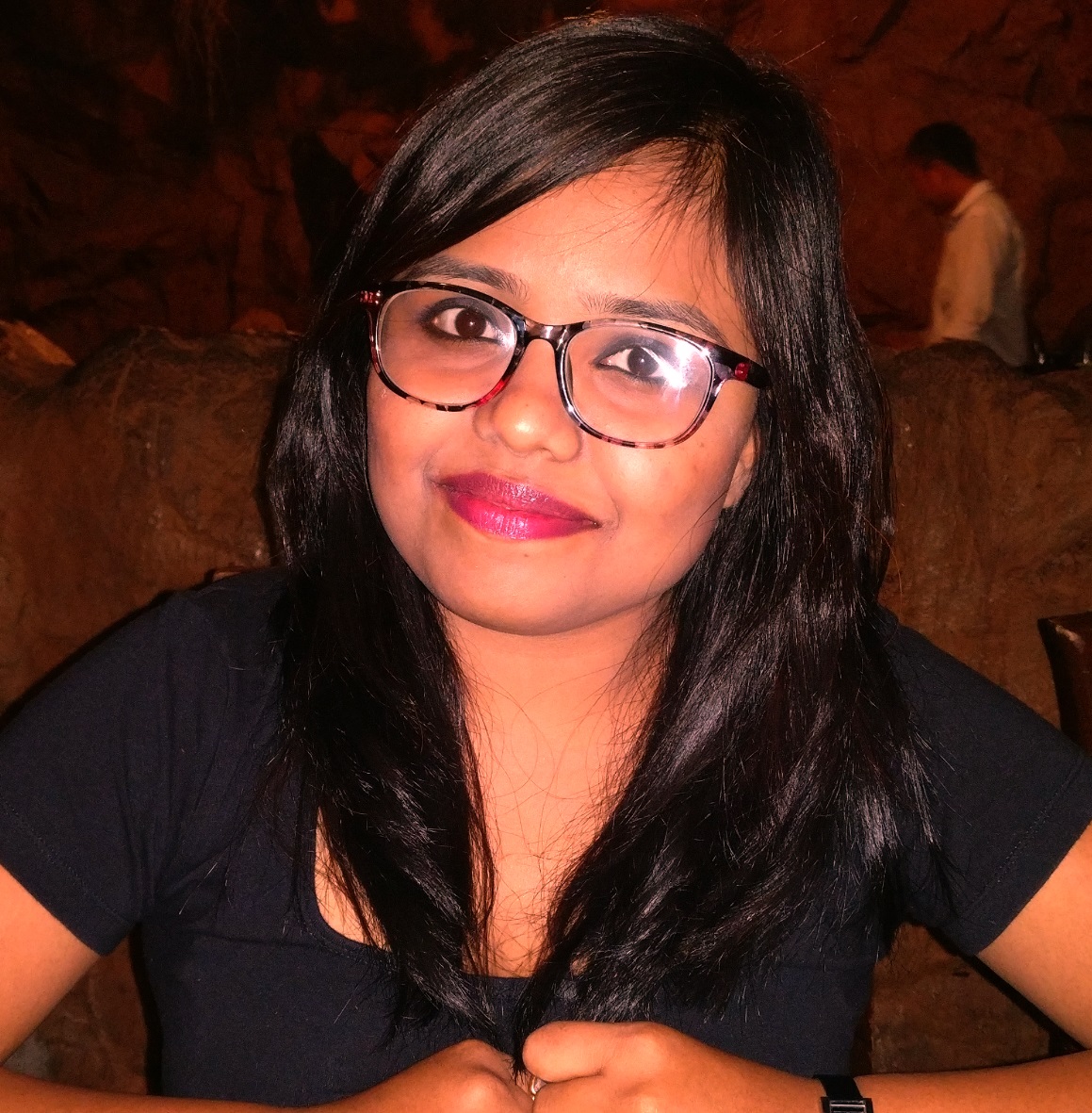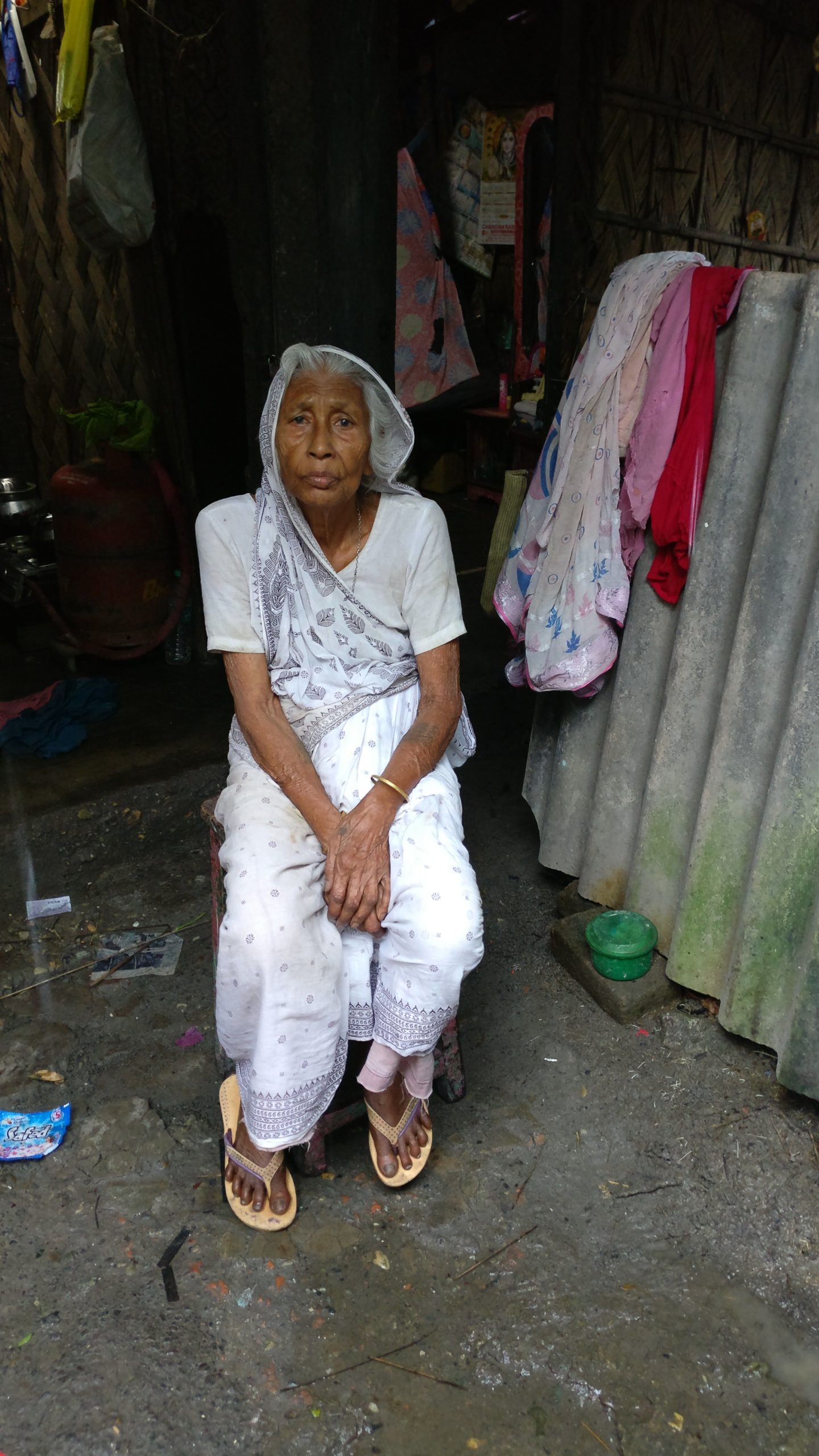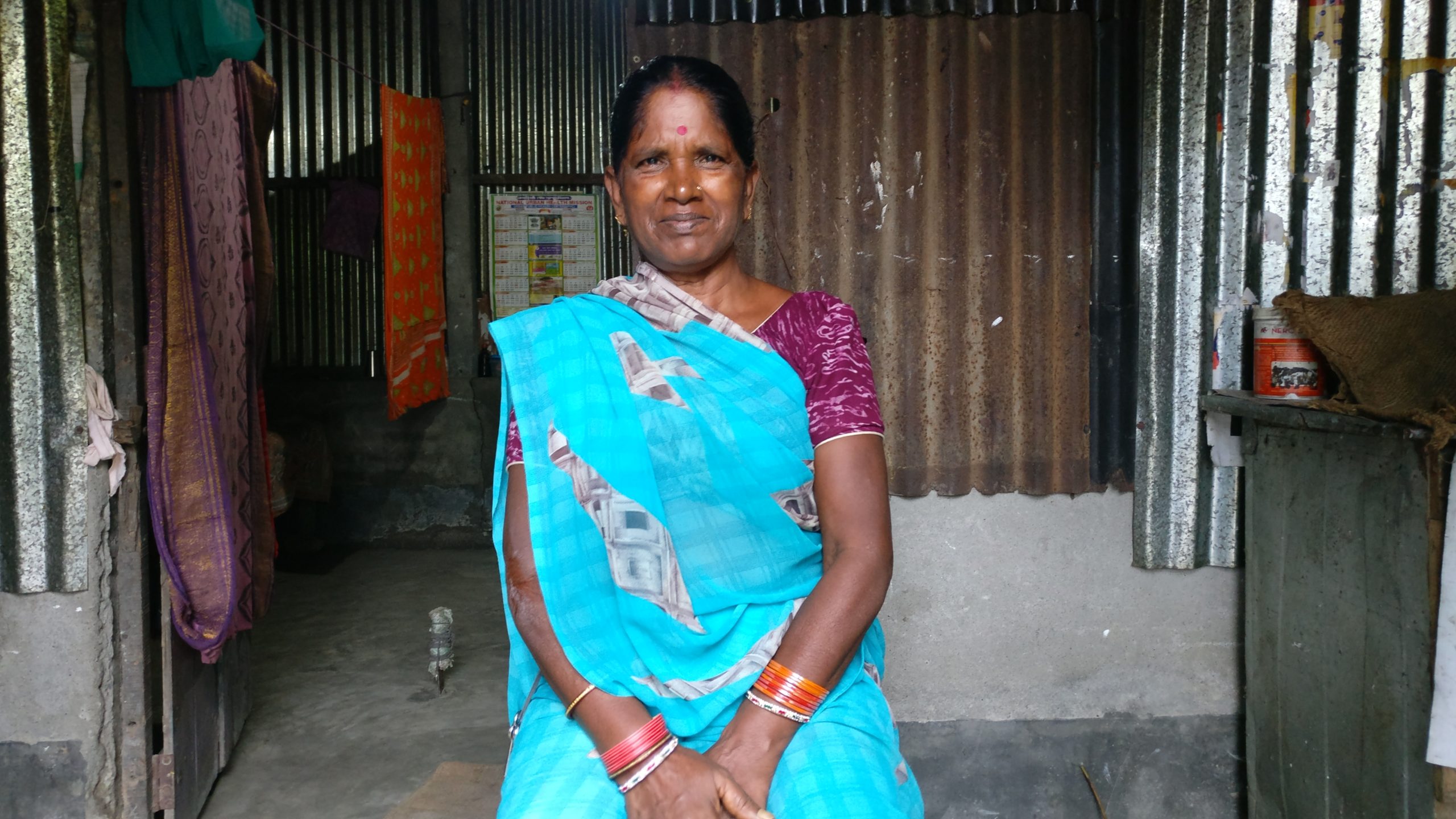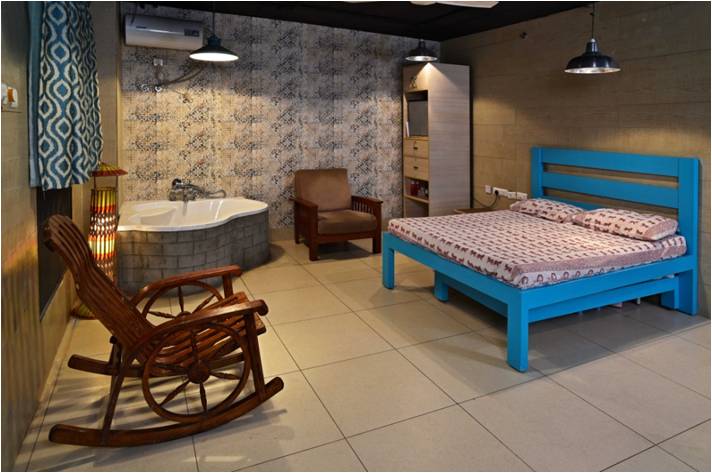Should India’s health infrastructure embrace traditional midwives?
Home-birth enthusiasts are rooting for the practice to be made mainstream by integrating traditional midwives, and midwifery in general, to the Indian health infrastructure.


Rukmini Rabidas, a traditional midwife from Cooch Behar, West Bengal. Photo: Purnima Sah
Sumitra Rabidas, an octogenarian, is probably the oldest dai (traditional midwife) in Rabidas Pally, a locality in West Bengal’s Cooch Behar where every girl used to be trained to be a midwife before they attained puberty. She is the last in her family to have practiced the profession. Her mother was a dai too. “Everybody referred to my mother as ‘Daima’. She helped women of many communities – Bengali, Bihari, Marwari, Muslim, and Nepali – deliver babies,” Sumitra told Gaon Connection.
“I was very young when I started to go with my mother to learn the basics of midwifery. I was married off when I was around 14 years of age. A year later, my mother helped me deliver my first child,” she said. “After delivering three sons, I decided to become a full-time dai,” recalled Sumitra, who discontinued her work two decades ago.
Two or three generations ago, women gave birth at home with dais handholding them through the entire process. Then, there were no medicines, vaccines, vitamins, or iron pills for pregnancy. Doctors and nurses didn’t exist either. People relied on the dais, whose only equipment was their skilled hands, a blade, and mustard oil.
Childbirth in India used to be a cultural event with a lot of rituals that helped in the healthy transition of a woman into a mother. With the British invasion, allopathic medicines came in, pushed midwives back, and birth became more of a clinical event.
Dais who worked with different communities said theirs was a selfless profession. They were unpaid but offered presents like sarees, cereals, and pulses. They walked miles, even late at night, to help women have natural births. Sometimes, they stayed over for an entire day with the expectant mothers in labour. The profession was also caste-based and was carried out only by the cobbler – called ‘chamar’ – a so-called lower-caste in the society. Today, they are not entertained, and not many skilled midwives are left. Men in this locality were either cobblers or manufacturers of musical instruments using leather such as—dhol and dhak (A type of drum, and membranophone), tabla, ektara, etc. and worked in wedding musical bands.
“I don’t really have a count of how many women I assisted. People wouldn’t pay more than three rupees in those days,” Sumitra dai recollected. “They gifted us sarees, pulses, and sometimes if a boy was born, we would get sweets and fruits. We never complained because we felt we were obliged to perform births and this is what we were born to do,” she added.

Rukmini Rabidas, 65, is another dai in the locality. Her mother and grandmother, from Cooch Behar’s Dewanhat village, were also dais. She learned the skills from them before she turned 11. But, with time, Rukmini dai, who does not know how to read or write and has no academic education, adapted new skills and continues to practice. She now offers pre and post-maternity massage and she assists mothers throughout their pregnancy helping them choose the right diet, making them do some ‘pregnancy workouts’, and giving a lot of emotional support to help mothers achieve a normal delivery.
“I remember getting paid just one rupee along with some vegetables, rice and sometimes a saree. When I was pregnant, my maternal grandmother and mother assisted me in home birth. I decided to continue their legacy for as long as I live and today the same skill is feeding our family,” said Rukmini dai.

It’s been four-years her only son passed away leaving behind his wife and their three sons. Her husband went missing 18 years ago, and her two daughters are married. “I had to improvise my skills to survive. That’s how I have been treating fractures, sprain, and any kind of body pain cases by massaging. I get Rs 6,000 in a month for massage in houses that had a delivery and Rs 3,000 for pain-relief massage,” she said.
The concept of home birth is a primitive idea today. But, Rukmini dai believes a woman’s body is wired to deliver babies without any medical intervention. They never used any instrument to cut the mother during labour. “15 days before the delivery date, I would educate the mother where all they can expect pain and told them they should not panic,” said Rukmini dai. “Birth was performed on the floor. We placed sacks and old bedsheets, an old pillow on the woman’s back, and laid her down. If the vaginal opening fits two fingers, it means, the baby isn’t near. If it fits three fingers, it’s time for the baby. We used a muslin cloth to hold the head of the baby and pull it out gently,” she explained.
During home births, a lot of counseling was given to the mothers. In labour, they were comforted and asked to breathe and relax. They felt cared for in a close environment with the women who were not strangers to them.
Lachiya Rabidas, 35, in this locality, had all her three sons – now between six to fifteen years of age – under the supervision of a dai. She had visited government hospitals twice during her first pregnancy to get vaccines, and never after that. “I never did any ultrasonography or took any vitamin pills or vaccines. I have seen many women in our locality who went through trauma in the maternity ward of hospitals,” Lachiya told Gaon Connection. “There is no privacy as it happens in an open room where people come and go and everybody would be staring at our private parts. Mothers in labour pain are abused by the nursing staff. There is no dignity in giving birth in such an environment. That’s why I decided to be assisted by a dai from our area,” she explained.
It’s been over sixteen years since daima Jalleshwari Rabidas, in her 60s, performed any home birth. Her husband and two sons are cobblers and they also manufacture and sell musical instruments. She is also the last dai in the family.

“Earlier people had blind faith in dais but today, they are scared to perform home birth because delivery is strongly institutionalised”, said Jalleshwari dai. She stopped practicing after a nursing staff, while she was assisting a mother in the labour room of a hospital, said that dais are ‘dangerous’ to pregnant mothers. Her sons do not want her to work as dai as it is not looked at as a respected job in society.
Prasenjit K Roy, obstetrician, gynaecologist and IVF specialist based out of Siliguri, is of the opinion dais can be of good help in rural areas if they are medically trained and do not engage in unhygienic practices. “Having said that, I strongly believe institutional births should be made compulsory for all women because it is the safest. Dais or midwives are required in areas where access to medical care and doctors are far from reach,” said Roy.
2020—International Year of the Nurse and the Midwife
Recognising the vital role played by nurses and midwives in healthcare services, the World Health Assembly has designated 2020 as the International Year of the Nurse and the Midwife.
A World Health Organisation (WHO) research shows that midwives could avert over 83 per cent of all maternal and newborn deaths. That’s why the emphasis is on the need of nine million more nurses and midwives if it is to achieve universal health coverage by 2030.
In 2018, at a conference led by WHO in New Delhi, Indian government had announced plans to introduce a national midwifery training programme. But, there is a lot of confusion over the concept of midwifery in India as it is merged with nursing and not an individual degree.
CV Kannaki Uthraraj, obstetrician and gynaecologist specialised in infertility treatment, who works at Thamarai Fertility and Women Health Centre, Coimbatore, said that having midwives as a part of maternal care largely depends on the kind of training they receive. “In western countries, midwives are highly trained and they are as good as doctors. They understand when a mother needs an expert’s intervention. We don’t have such an excellent facility in India,” said Uthraraj.
“There are auxiliary nurse midwives but how much are they trained, how is their curriculum set, do they recognise dangers to the mother and the baby? All this requires a thorough intervention, judged by an expert committee and the curriculum should also be revised too,” she explained.
Of birth centres and doulas
Doulas are women who assist pregnant women and their families during labour and after childbirth. They offer continuous physical and emotional support; they offer the right exercises during pregnancy that help the mothers calm and the chances of having cesarean-section are lesser.
Dr Vijaya Krishnan, Director, Co-Founder of The Sanctum Natural Birth Center has over 12 years of experience as a midwife. She is also a childbirth educator for 15 years and a doula. “In India, there is no concept of birth centres yet, so I had to register my institution under the hospital category,” she said.
“Birth centres are more about counseling the to-be parents about every aspect of pregnancy, making them aware of their health, and midwives walk every step of the pregnancy journey with the women. In case of an emergency, we also have a backup obstetrician-gynecologist (OB-GYN) services in house,” she explained. “We have 93 per cent of natural birth and this is what we have been educating people that not every woman requires cesarean because a woman’s body is capable of natural birth,” said Dr Krishnan who also believes that the acceptance of natural birth is increasing with time.

Trained doula and hypnobirthing practitioner, Ruth Malik, founder of Birth India, a non-profit, has 14 years of experience supporting women to make informed choices in pregnancy and childbirth. “I felt a big loss of experiencing birth when both my kids were unnecessarily born via caesarean surgeries,” Malik told Gaon Connection. “95 to 98 per cent of women can give birth naturally without any medical intervention. Sadly, in India not even 50 per cent of women are giving birth naturally,” said Malik.
The more educated the state is, the more institutional the deliveries. In Tamil Nadu, home birth is illegal and if it is performed, a birth certificate is not issued by any institution.
Sangheetha Parthasarathy, Chennai-based strategy consultant-turned-birth doula had a home birth and water birth for both her daughters when she was in the UK. “The Indian medical curriculum has not changed in a hundred years so we are training the doctors with very outdated protocols. We have lost the personalisation of birth amidst the standardisation and hierarchy in the birth room. This has led to a high rate of intervention and cesarean cases,” said Parthasarathy.
Uthraraj is of the opinion that home birth has a lot of risks. “There are some institutions practicing births in a resort kind of set up, without immediate medical support like an operating theatre, intensive care unit, blood bank, and anaesthetist. They are putting women at risk. Once a woman gets into labor she should be immediately transferred into a labor room,” she said.
Priyanka Idicula, director of Birth Village, a natural birthing centre in Kerala’s Cochin, and managing trustee for Birth for Change, a non-profit, is a certified professional midwife and Lamaze certified childbirth educator. She has trained extensively in prenatal and postnatal care and childbirth education. Idicula said even experienced midwives are not valued in India and are not licensed to work independently. “As per the rules of the International Confederation of Midwives, there has to be one midwife for every woman in labor. Where are we in India? We generally have one doctor for a thousand patients. This is why I feel we need to be scaling up our midwives to patient ratio,” said Idicula.
“Another matter of concern is that what people consider normal delivery in hospitals is not normal at all. Natural birth means without any intervention, that is, vaginal birth without slitting the vagina but unfortunately, such births are termed as ‘normal deliveries’,” added Idicula.
A tremendous spike in C-section
Since 2008-09, India’s caesarean-section births in both public and private hospitals have doubled. A report published in The Print elaborates how India has registered a jump of over 300 per cent in C-section deliveries at public hospitals, and 400 per cent in private hospitals in the last decade. According to data collected by the Union Ministry of Health and Family Welfare under the Health Management Information System (HMIS), over 14 per cent of the total births in 2018-19 took place through a C-section — around 19 lakh births out of the total 1.3 crore — in public hospitals.
According to the National Family Health Survey (2015-2016), Telangana had the highest rates of caesarean birth in the country, with 74.9 per cent in the private sector and 40.3 per cent in the public sector. As per WHO, cesarean-section should not exceed 10-15 per cent in any state or a country. This is what led the Telangana government to implement a midwifery course in October 2017 in the district of Karimnagar.
“The problem we are facing today is the concept of midwife has been merged with nursing. The government bodies need to understand the difference between nurses and midwifery,” said Dr Krishnan. Professions like dais and midwives are always looked down. They do so much work but they are all unrecognised, underpaid and undervalued.

